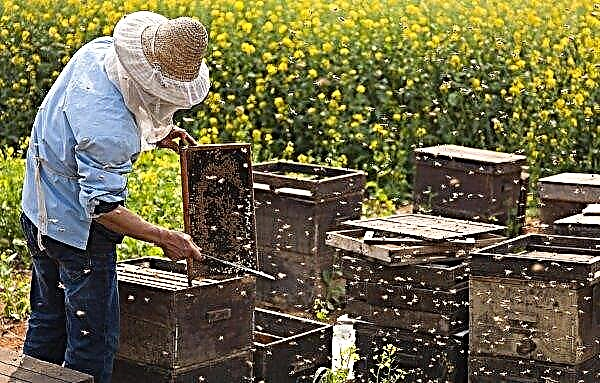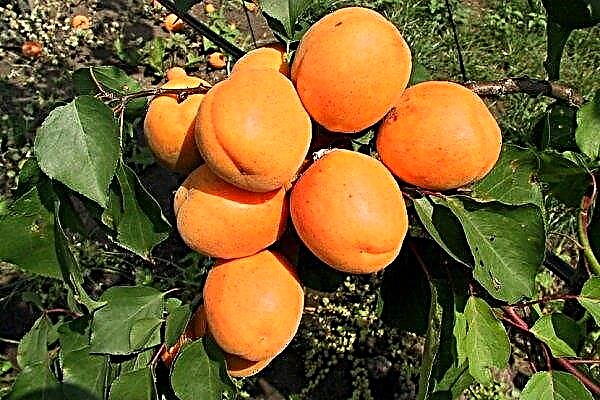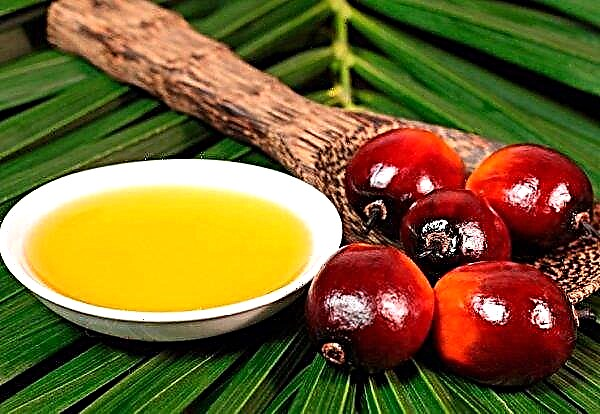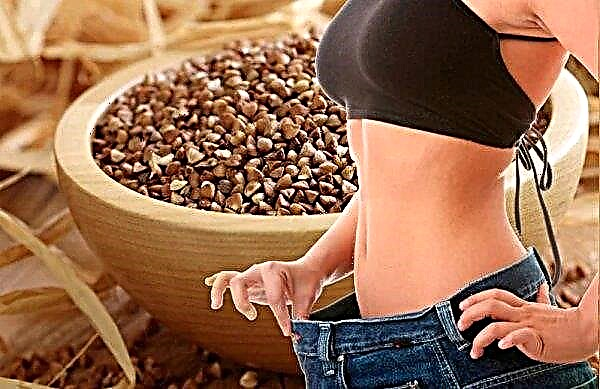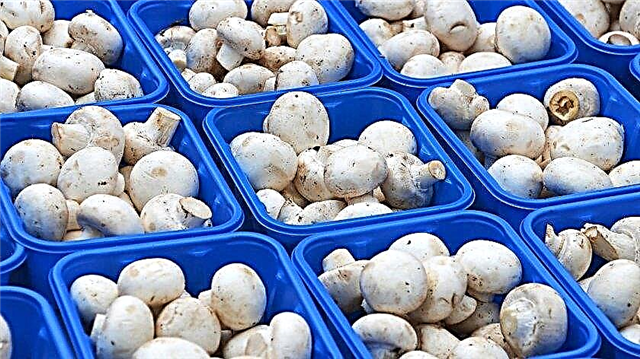In the markets and in stores, customers are presented with a wide selection of potato varieties that differ in their taste and care features. Among them is the Picasso variety - a high-yielding potato with many positive qualities. In the article we will tell in detail about the characteristics of this interesting variety, the peculiarities of its cultivation and its propensity for diseases.
Characterization and description of the variety
The Picasso potato variety is the result of the successful work of breeders from the Netherlands. In the CIS, this variety is in fairly high demand. This potato is late ripe, with a table setting, has high yields with standard care. There are large yellowish fruits weighing up to 120 g, round-oval, with many shallow, pinkish-red eyes. The bushes of the plant are tall, intermediate, with dark green, sprawling, large foliage. The culture blooms profusely with white flowers with small corollas. Berries are rarely formed.
We suggest that you familiarize yourself with some of the characteristics of the described variety.
Video: Picasso Potato Harvest
Taste qualities
Picasso potatoes have a flesh-colored flesh with a starchiness of 10-12%. Tuberous crops in cooking with moderate boiling point, have a pleasant taste.
Did you know? In Russia, Dutch potato of the Picasso variety was very fond of gardeners, so they began to call it differently in different regions: Ivan da Marya, Little Red Riding Hood, Drunkard, Matryoshka, Ryabinushka and others.
Ripening period and productivity
The described type of potato has the following ripening and yield:
- vegetation period - 110–120 days;
- stage of withering and drying of the tops - from 140 to 150 days;
- the variety has a maximum yield of 325 kg / ha;
- tubers have a shelf life of 80–90% (10% higher than the standard).
Advantages and disadvantages
- The type of potato in question has the following advantages:
- the variety is unpretentious in care;
- excellent taste and pronounced potato aroma of tubers;
- resistance to viruses and many diseases;
- the culture tolerates temperature fluctuations and high humidity without problems;
- high survival rate of seed material in moderate climatic conditions;
- the culture is intended for long-term storage (losses - not higher than 10-12%);
- tubers easily tolerate long transport.

- The disadvantages of the variety:
- tubers are poorly cleaned due to the many eyes;
- the culture needs good fertilizers, otherwise the taste qualities of tubers are lost;
- vulnerability to late blight disease (if there was no preliminary treatment with special drugs);
- defeat by the Colorado potato beetle;
- the difficulty of growing in regions with a short summer period.
Planting and growing potatoes
Since this type of potato is late-ripening, it is recommended to plant it a little earlier than early or mid-early varieties, observing all the rules of planting and care.
Optimal landing times
It is best to plant potatoes of the variety in question in the last decade of April or in early May, when the temperature is + 7 ... + 10 ° С, and after the threat of unexpected frosts passes.

Crop rotation rules
It is very important to observe crop rotation rules when planting the described variety, planting a crop every year in a new place. This will help prevent the accumulation of infections and dangerous parasites in the ground.
Did you know? The name "Picasso" potato with bright pink adnexa buds owes the work of the famous painter Pablo Picasso, in whose work there was a period called "pink".
The best predecessors for this potato will be:
- garlic;
- various varieties of onions;
- legumes;
- cabbage.
If it is not possible to change the beds on the site, it is necessary to disinfect the soil with the help of green manure (oats, rye, mustard), planting them in the fall at the site of the future potato planting. These cereals will not only disinfect the soil, but will also serve as good nutrition for the culture when it is planted.
Soil requirements
The culture of this species prefers soils with increased fertility, therefore, before planting root tubers, actions are required to improve the quality of the soil on the site: since the autumn, organic fertilizers have been added to the soil in the form of compost at the rate of 5 kg per 1 m² or 10 kg of rotted manure. In the spring, after thawing the earth, it is dug up and leveled with a rake.
Preparing planting material
To accelerate the maturation of the potato crop of Picasso, it is recommended to use some methods of pre-sowing preparation.
Important! After cutting Picasso tubers, planting material becomes more susceptible to diseases and parasites.
Among them:
- Before planting, medium-sized potatoes (up to 5 cm) are picked, intact, and processed with Zircon or Epin-Extra phytohormones.
- Planting material is germinated in a bright place at temperature indicators from + 12 ° C to + 15 ° C.
- It is permissible to use wet germination by placing tubers in wet peat or sawdust (boxes can be used for this), sprinkling on top with the same raw materials (for a period of 15 to 20 days).
- To prevent disease, a couple of days before planting, root crops are placed for 20 minutes in a disinfectant liquid (water (10 l) + copper sulfate (10 g) + boric acid (50 g).
- If there is little planting material, it is permissible to divide potatoes with a knife into segments with at least two sprouts; sections are treated with ash, and parts of the tubers are then kept in a shaded place until a crust appears, and then planted.

Landing technology
Picasso potatoes will give an excellent harvest, if you properly observe the technology of its planting:
- The beds should be located on a high, well-lit area.
- The soil for planting potatoes should warm up well.
- The soil should be moderately moist (when planted in excessively moist soil, the tubers may rot or be damaged by other diseases).
- Planting is carried out according to the scheme: 50 cm between the bushes and 70 cm - row spacing (a similar scheme will help tall bushes not to drown each other).
- The deepening of root crops depends on the soil composition: with heavy or clay soil, the depth of tuber incorporation should be minimal (6–8 cm); in fertile and light soil, tubers are placed to a depth of 10 cm.
- After planting, the soil above the tubers is slightly compacted.
Did you know? According to popular belief, the time of planting potatoes is determined by the period of leafing in the birches.
Potato care after planting
The entire growing season of Picasso potatoes needs the following care:
- You need to regularly loosen the soil and remove weeds. This contributes to good aeration in the beds and the preservation of plant nutrients.
- The first hilling of the bushes is carried out after the appearance of 20 cm of sprouts, the second - after 7 days (they wake up after watering or rains the next day). This procedure is necessary for good breathing and proper development of the bushes, as well as for the formation of many stolons (underground stems) on the roots, which increases productivity by up to 30%.
- With the threat of frost, the emerged seedlings can be completely sprinkled with soil.
- Watering is carried out in the evening according to the following scheme: the first - when the seedlings appeared, the second - during the budding of the bushes, the third - after the flowers fall. The required volume of fluid is 5 liters for each bush. Water is served in the aisles or under each bush.
- Timely top dressing of the culture is also necessary for good tuberization.

Nutrient mixtures are added according to the following scheme:
- 14 days after the tubers are planted, a solution of 10 l of water and 0.5 l of chicken droppings is prepared and left for 2 weeks. After that, urea (20 g) is added to the solution and poured into long holes made in the rows.
- The next top dressing is carried out during the formation of tubers (stage of budding). To do this, 10 liters of water are mixed with nitroammophos (15 g) and superphosphate (40 g). Each plant should account for 0.5 l of the nutrient mixture.
- Another top-dressing, foliar, is carried out at the end of flowering: the bushes are sprayed with a solution of superphosphate (100 g per 10 l of water). This quantity is calculated on a bed in 10 m².
Possible growing difficulties
Although Picasso has a good immune system and is considered resistant to many diseases and parasites, inadequate crop maintenance can lead to some diseases and pests.
Important! When working with fungicidal or insecticidal solutions, it is necessary to use protective equipment in the form of gloves and a respirator. And if the wind speed reaches more than 10 m / s, you should abandon the spraying procedure.
Among them:
- Late blight. In order to prevent during the season, the bushes are treated 5 times (with an interval of 7-10 days) with fungicides "Acrobat MC" (40 g per 10 l of water), "Ecopin" (1 g per 10 l of water), "Fitosporin-M" ( 1 tbsp. Per 10 liters of water). The treatment methods and the amount of irrigation are indicated in the instructions for the preparations. If nevertheless there is an infection with late blight, all the affected foliage is detected and destroyed, and the bushes are treated with chemicals Oksikhom and Ridomil MC (processing is carried out several times with an interval of 14 days).
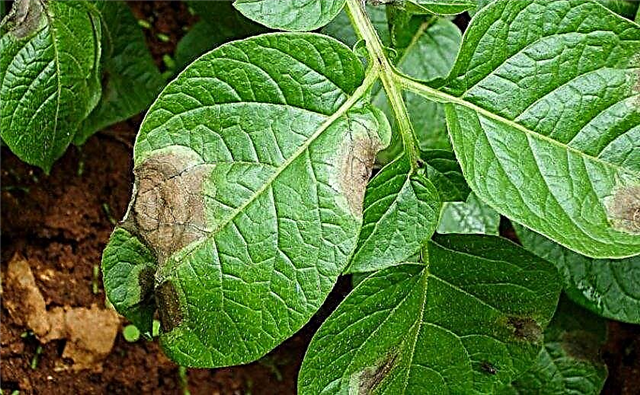
- Scab. A fungal disease that affects the underground parts of plants, due to which the affected tubers change their taste and are poorly stored. Control measures include: sulfate-containing fertilizers (in acidic soils), use only compost for fertilizer; crop rotation.
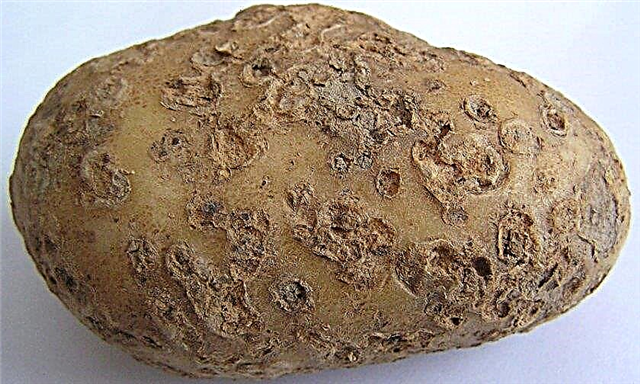
- Colorado potato beetle and its larvae. Insecticides are suitable for processing: Aktara (used before flowering, when the first shoots appear); "Actellik", "Fitoverm" (with the mass appearance of parasites); “Colorado” (multiple spraying per season is permissible, but no later than 20 days before harvesting potatoes); "Confidor Maxi (Extra)" (according to the instructions).

Features of harvesting and storage of crops
Picasso potatoes have some harvesting and storage features:
- The culture will be distinguished by good harvest keeping quality if you dig up the tubers in dry weather and then dry them sufficiently.
- For storage, it is necessary to lay exclusively whole and healthy tubers. Tubers cut and damaged by diseases or parasites should be selected separately and consumed first of all, since such products will not be able to lie for a long time.
- It is not allowed to wash the earth off the surface of the skin so that excess moisture does not contribute to the rotting of the tubers. Dirt must be carefully cleaned mechanically.
- Sorted fruits are distributed in baskets or boxes (with holes).
- Potatoes are stored in cool rooms with temperatures from + 1 ° C to + 4 ° C and humidity 80–90%.
Network user reviews
ADVANTAGES:
The beetle doesn’t love it, late blight does not like it
LIMITATIONS:
The taste is not the best, poorly cleaned
Two big and fat pluses of this variety: 1. Picasso doesn’t really like to eat Colorado potato beetle, it has been seen for several years, when it is a lot on other varieties, it is half as much, and this is constant. The variety is not genetically modified, which excludes its protection from the bug, just as it is not very tasty for me, like a regular rural, old variety. It is definitely not suitable for frying, but just for mashed potatoes - just right, it cooks very soon, which saves gas consumption. It is also not suitable for soups, as it is completely boiled. 2. Picasso potato affects phytophthora much less, which saves your money on chemistry, when our potato is rampant in the neighbors of phytophthora, it stands green as if nothing had happened. This has been noticed for several years, late blight begins to hit him when he grows up in large bushes, and then in some places. At first we treated it for diseases, but for the last two years we have not used anything, everything was fine! It is preserved well all winter, one drawback is that it is bad to clean it with its holes, and of course it tastes, but there are people who like it.








